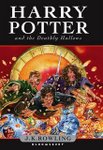 Photograph: Will and Peter in Abbey Fields.
Photograph: Will and Peter in Abbey Fields.In the Domesday Book, the survey of the King’s dominion made by William the Conquerer in 1086, Kenilworth appears as Chinewrd—a small enclosure or hamlet that originally belonged to a Saxon woman named Chinehild—and was home to ten villeins (tenant farmers) and seven bordars (lower-ranking tenant farmers). What first put the town on the royal map was Henry I’s grant of land in Kenilworth to his chamberlain, Geoffrey de Clinton, in 1119. It was de Clinton who established both Kenilworth Castle and the Augustinian priory, the Abbey of St. Mary. The abbey was dissolved by Henry VIII in 1538, and over the centuries that followed the abbey buildings were dismantled to provide building stone for improvements to the Castle.
 The abbey stood on what is now Abbey Fields, the main public park in Kenilworth, which lies between the old and new towns. The town’s indoor swimming pool stands on the site of a mill connected to the medieval abbey, and nearby stands the only complete structure remaining from the abbey—this medieval barn, which now houses the local history museum (open only on summer Sunday afternoons). The museum contains architectural fragments of the old abbey—arches and corbels and various bits of stone ornamentation—as well as other artifacts from two thousand years of the town’s history: Roman tiles, horn combs made in local workshops in the first half of the nineteenth century, old photographs of the Square before it was destroyed by a Nazi bomb.
The abbey stood on what is now Abbey Fields, the main public park in Kenilworth, which lies between the old and new towns. The town’s indoor swimming pool stands on the site of a mill connected to the medieval abbey, and nearby stands the only complete structure remaining from the abbey—this medieval barn, which now houses the local history museum (open only on summer Sunday afternoons). The museum contains architectural fragments of the old abbey—arches and corbels and various bits of stone ornamentation—as well as other artifacts from two thousand years of the town’s history: Roman tiles, horn combs made in local workshops in the first half of the nineteenth century, old photographs of the Square before it was destroyed by a Nazi bomb. Abbey Fields is bordered on the north by High Street, the principal street of the old town, and the street where the market was held in the 14th and 15th century. High Street is home to what may be the oldest pub in Kenilworth, The Virgins and Castle. It’s possible that the pub had its start as the hospitality house of the Abbey of St. Mary, and may have welcomed travellers under the sign of the Virgin—that is, St. Mary. In any case, after Queen Elizabeth I visited Kenilworth in 1575, the pub became The Two Virgins. The name was changed to The Castle in 1827, and then to the The Virgins and Castle in 1854—and so it remains. Today, The Virgins and Castle is an attractive, comfortable pub, full of the kind of ambience that may only come from six hundred years of history. But as you can see from the ladder out front, the pub just received a fresh coat of white paint last week. Clara and I stopped in for a pint on a Friday afternoon (I had a mediocre pint of Everard's Beacon), and passed through a variety of snug rooms and cozy nooks (where, for some reason, I imagined David Copperfield having a pint with Steerforth) on our way to the sunny patio out back. The fresh air of the patio at least helped the smoke to dissipate somewhat.
Abbey Fields is bordered on the north by High Street, the principal street of the old town, and the street where the market was held in the 14th and 15th century. High Street is home to what may be the oldest pub in Kenilworth, The Virgins and Castle. It’s possible that the pub had its start as the hospitality house of the Abbey of St. Mary, and may have welcomed travellers under the sign of the Virgin—that is, St. Mary. In any case, after Queen Elizabeth I visited Kenilworth in 1575, the pub became The Two Virgins. The name was changed to The Castle in 1827, and then to the The Virgins and Castle in 1854—and so it remains. Today, The Virgins and Castle is an attractive, comfortable pub, full of the kind of ambience that may only come from six hundred years of history. But as you can see from the ladder out front, the pub just received a fresh coat of white paint last week. Clara and I stopped in for a pint on a Friday afternoon (I had a mediocre pint of Everard's Beacon), and passed through a variety of snug rooms and cozy nooks (where, for some reason, I imagined David Copperfield having a pint with Steerforth) on our way to the sunny patio out back. The fresh air of the patio at least helped the smoke to dissipate somewhat.According to 2005 statistics, 25% of adults over 16 in Britain smoke. I'm not sure that this is a higher percentage than in America, but in America smoking bans have become the norm. When, in 2005, the British government proposed a smoking ban in pubs where food is served, many publicans said they would stop serving food rather than submit to a ban on smoking.


No comments:
Post a Comment